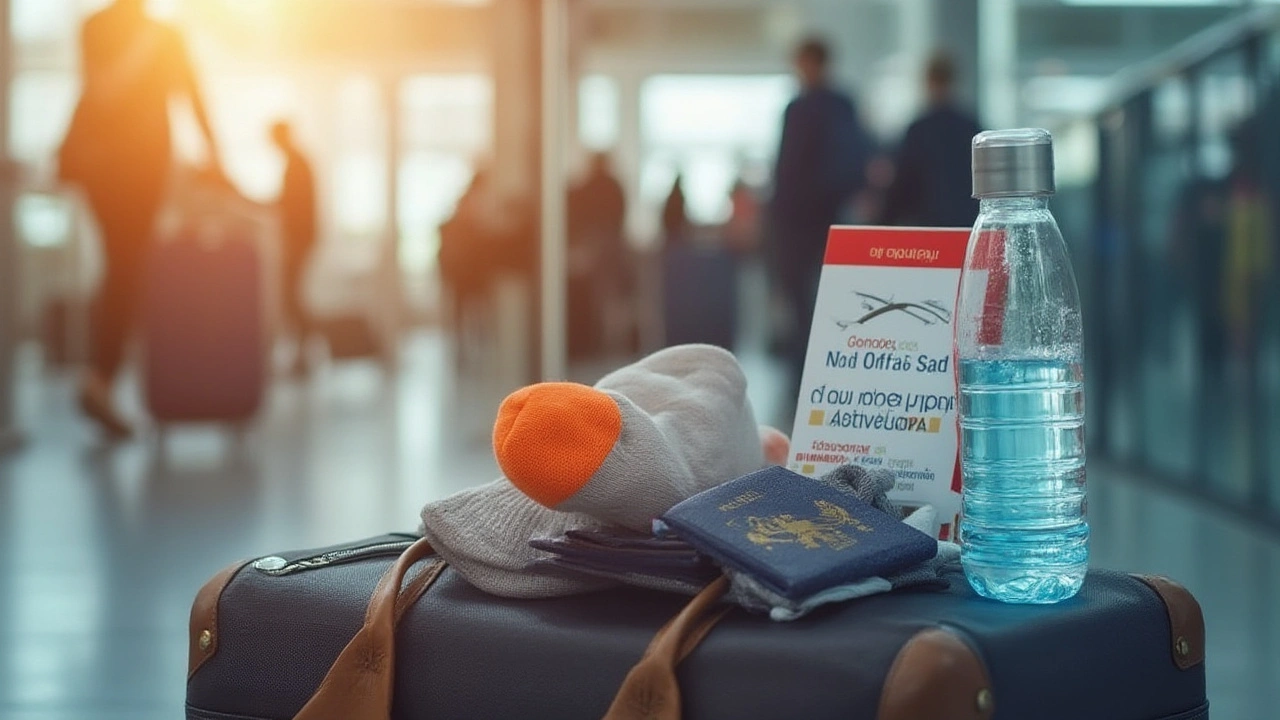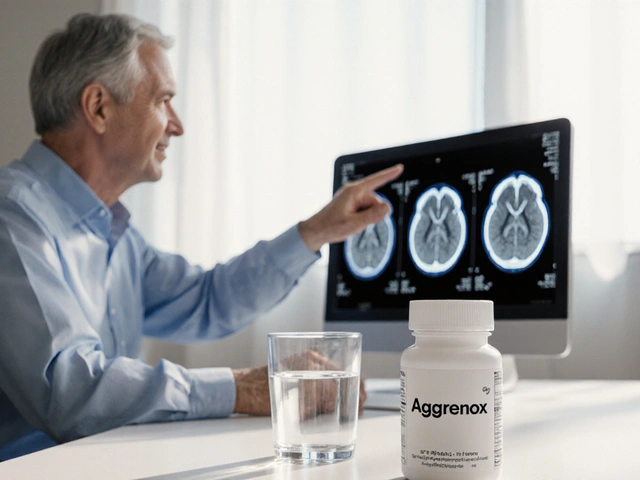There’s one thing about spending hours crammed into an airplane seat: it’s like a cruel experiment in how stiff the human body can get. Add the risk of deep vein thrombosis (DVT), especially if you’re taking a blood thinner like apixaban, and air travel becomes more than just a test of patience. But the good news? DVT doesn’t have to be your unwelcome travel buddy. You just need a game plan—with smart movement routines, compression tricks, and hydration habits as your shield. Ready to trade worry for action? Here’s how you get your circulation working for you, not against you, up in the sky.
Understanding the DVT-Apocalypse: What Happens to Blood Flow on Flights
Commercial jet cabins have less oxygen than ground-level air, lower humidity, and tons of pressurization. It’s not just uncomfortable; it messes with your body on a cellular level. Extended stillness means blood pools in your legs, making clots much more likely. Studies from the World Health Organization show that flights longer than four hours can double your risk of developing a DVT. Add in factors like cramped seats, dehydration, and low cabin pressure, and you’ve got a cocktail that’s rougher than any cheap airport gin.
If you’re on apixaban—a blood thinner designed to reduce clotting—your baseline DVT risk is already under watch. That’s great. But being on this medication doesn’t make you invincible in a flying metal tube. You still need to move, hydrate, and sometimes squeeze into tight socks (yes, compression stockings). Half the game is knowing what actually works. For example, even healthy travelers can see swelling and reduced venous flow after just a couple of hours at 35,000 feet, and the impact ramps up with time in seat. Blood thinners help, but they don’t switch off risk, especially if you’re older, overweight, or have a history of clots.
Lots of travelers on apixaban worry about unexpected bleeding if they get injured in-flight or move too energetically. But skipping movement is riskier. The Journal of Thrombosis and Haemostasis has found that walking the aisles—even for five minutes every hour—can keep venous flow from dipping dangerously low. The balance? Safe, frequent, and controlled activity. Add compression stockings that provide 15-20 mmHg of pressure, and studies say you can cut your risk of symptomatic DVT by more than half on flights over eight hours. Now, that’s a statistic that should ease your mind.
Before you head through security, let your doctor know about any travel plans. They may adjust your apixaban dosing schedule, depending on time zones or if your flight is super long. For more tailored tips on flying with apixaban, there’s a handy resource you should check. Flying isn’t a risk-free zone, but you’re far from powerless to protect yourself.

The Art of In-Flight Movement: Simple Routines That Actually Work
Forget the awkward looks from seatmates—it’s your circulation on the line. Movement is hands down the single biggest DVT deterrent aviation can offer, short of flying first class and lying flat (and even then, it helps). Experts recommend movement every 30-60 minutes, and it doesn’t have to be fancy or strenuous. The key is steering clear of total stillness—the mortal enemy of good blood flow.
If you can get up, walk! Just a lap or two to the bathroom counts. But even stuck at the window, there’s plenty to do. Here’s a quick menu of simple leg-movers—no gym shorts required:
- Ankle Circles: While seated, lift each foot and gently rotate clockwise for 15 seconds, then reverse. Repeat a couple of times an hour.
- Toe Tapping: With feet flat on the floor, lift your toes up and then press them down in rapid taps for a minute. This engages your calf muscles and gets veins pumping.
- Knee Lifts: Pull each knee gently up toward your chest (as space allows) and release. Even small movements stimulate flow.
- Foot Pumps: Press your heels into the floor, then your toes, mimicking a pumping motion for 30 seconds per side.
- Seated Marches: Alternate lifting knees as if you’re marching, holding for a second each rep.
Pilot organizations (yes, the folks who spend hundreds of hours in a cockpit) recommend setting an hourly timer as a reminder to move. For long flights—think eight-plus hours—try for some sort of movement every hour. If you’re on an overnight, don’t ignore this just because you’re dozing; subtle ankle circles while half-asleep do count.
Physical therapists often suggest stretching your hip flexors and hamstrings when you first stand up. Simple as raising your knee high and holding for a second or two. This wakes up the biggest blood vessels in your legs. Plus, the bonus: it keeps you from feeling like you’ve aged ten years when you finally exit the plane. The awkward “airplane shuffle” after landing? That’s your blood flow getting back online.
Want proof that tiny changes add up? A study of transatlantic passengers wearing step-tracking devices found that those who racked up at least 250 steps per flight had 40% less swelling and nearly no reports of suspected DVT, compared to folks who stayed glued to their seats. The difference isn’t subtle—it’s major.
If you have mobility challenges or use a walking aid, don’t stress. Even foot pumps and upper-leg contractions while seated can slash your DVT risk. Some airlines hand out printed exercise guides—never hurts to ask. Or just save this list to your phone and set those hourly alarms. Your future self will thank you.

Compression Gear & Hydration: The Unsung Heroes of Air Travel
Compression stockings look like something you’d steal from your grandpa’s sock drawer, but they’re actually cutting-edge tech. Modern designs squeeze your lower legs gently, promoting consistent blood flow and reducing venous pooling. Go for knee-highs with 15-20 mmHg pressure—they’re Goldilocks-level “just right” for travel. If you’ve had a prior DVT or are at especially high risk, chat with your doctor about thigh-highs or custom-fitted pairs.
Don’t forget—put them on before you board. Trying to wrestle these over swollen legs mid-flight is like arm-wrestling an angry eel. Plus, you’ll want the full benefit as cabin pressure dips after takeoff. Skip cheap versions you find in drugstore bins; a decent pair costs $25-50 and lasts years.
Hydration is critical. Dehydration doesn’t just make you cranky; it literally thickens your blood, raising clot risk. Airlines don’t exactly hand out water like candy, and the mister blowing bone-dry air for hours doesn’t help. Set a realistic target: about 8 ounces (250 ml) of water every hour you’re awake, more if the cabin is sweltering or you’re eating salty snacks. Want data? Research by the Aerospace Medical Association found that travelers who hit that hydration target cut their DVT risk in half, compared to those who averaged less than 20 ounces per eight-hour flight.
Coffee, tea, and alcoholic drinks can count toward fluid intake, but they’re also diuretics—so you’ll pee more and might get dehydrated without noticing. Try alternating one non-alcoholic, non-caffeinated drink between every “fun” beverage. And always keep a small bottle in your seatback pocket—don’t rely on the flight crew for regular refills. They’re busy, and by the time your water arrives, your body’s already playing catch-up.
For apixaban users, being hydrated isn’t just about DVT; it keeps your kidneys and liver happy, which can matter if you’re on this med for the long haul. Plus, it helps you feel less wiped out by the end of the journey—the ultimate bonus. Worried about bathroom trips? Aisle seats are your friend—they’re made for the mover and the water-sipper.
Compression and hydration go hand in hand. Think of them as a power duo. When researchers looked at people who did both (compression socks and regular water intake) compared to those who chose one or neither, they found a striking difference in DVT cases and reported swelling after flights. Here’s a quick breakdown:
| Routine | DVT Incidents (per 1000 travelers) | Reported Swelling (%) |
|---|---|---|
| Movement + Compression + Hydration | 0.6 | 5% |
| Movement Only | 2.0 | 15% |
| Compression Only | 2.5 | 20% |
| No Routine | 5.2 | 45% |
Notice how combining strategies crushes the risk? There’s your answer.
Do one thing for yourself before your next big trip: line up your routine. Pack quality compression socks, bring a water bottle you like, and keep movement reminders handy. If you need to know more about how to handle medication logistics or potential interactions on the road, don’t miss this detailed guide for flying with apixaban. Your future flights (and future veins) will genuinely thank you.







Sebastian Samuel
July 17, 2025 AT 01:25